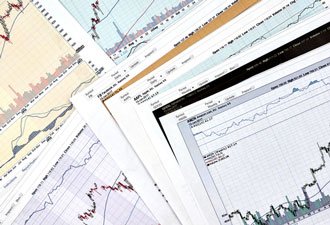It's no surprise to most investors that earnings drive stock prices. That's why the financial media devotes so much time to covering earnings reports.

In fact, earnings can be the catalyst that gets prices moving in a big way and in a short period of time. It's no wonder why options traders tend salivate like Pavlov's dogs during earnings season.
But trying to guess what a stock will do heading into its earnings report and right afterward is tough game to play. Plus, you will be up against Wall Street pros with their armies of number crunchers and computer power, making your odds of success much lower.
Fortunately, there's a better way.
Money Morning Technical Trading Specialist D.R. Barton, Jr., has another way for an individual investor to capitalize on earnings season. He likes to look at how stocks are set up to move after earnings, not just when the earnings are released.
D.R. broke down the process for us, focusing on tech and retail giant Amazon.com Inc. (NASDAQ: AMZN). Right now, in the middle of the global pandemic, everyone, it seems, is buying online to avoid having to go into a physical store. And that is even if your favorite store has what you want on its shelves. Or is even open at all.
Options 101: It's never been easier to learn how to trade options, especially with our free guide from top trading expert Tom Gentile. Click here to get it.
With Amazon, a few clicks get you what you need in just a few days, and you can stay safe in your home. That's why Amazon's first-quarter sales swelled to $75.4 billion, an increase of 26% over last year at this time.
The problem, at least on the surface, was that expenses soared, too. That meant that earnings on the bottom line fell 29% and below analyst estimates. Shares fell 7.6% the next day as investors learned that the company would spend upwards of $4 billion to keep up with demand and safety procedures caused by COVID-19.
Traders who piled into Amazon expecting an earnings pop were sorely disappointed.
That was not lost on D.R., who thinks Amazon is a buy right now. By waiting out the earnings swing, entering Amazon now is an even better opportunity.
Remember what the company is spending its money on. It is expanding its capacity and improving its procedures to be able to sell even more over time. It is not just a consequence of the pandemic but rather an investment in profiting from the demand that is very likely to remain high for quite some time as people continue to shun physical stores.
That's why traders have an opportunity to capitalize on Wall Street's short-sightedness.
And this options trade is exactly how to do it...
The Amazon Options Trade to Make Right Now
[mmpazkzone name="in-story" network="9794" site="307044" id="137008" type="4"]
As we already mentioned, options traders love earnings season. But there is another reason why we are going to look at an options trade on Amazon. It's a simple reason, too. Shares of Amazon are just too highly priced. At their recent price of $2,351.26, it would cost you $235,126 to buy one round lot of 100 shares of the stock. That's above the pocketbooks of most of us.
However, with options, we can control the same 100 shares for a fraction of the cost. But again, a fraction of the price of Amazon is still a pretty penny. In fact, the at-the-money call for Jul. 17 closed Wednesday at $139.65, or $13,965 for one call option contract. That's still a lot of cash.
So, D.R. suggests using an option spread to reduce the cost - and the risk.
A credit spread, or bull call spread, is a two-part trade where you buy one call with a strike, or exercise price, just below the price of the stock, and simultaneously sell a call with the same expiration date and a strike price above the price of the stock.
This reduces your net cost because the price of the higher-strike option partially pays for the lower-strike option. You still profit when the stock price rises.
But there is a catch. You only use a credit spread when you have a near-term target price in mind. That's because your profit is capped by the option you sell.
The good news is that your risk, should the stock stay the same or move lower, is also limited to the price you paid for the spread. It is a great way to participate in a company's good fortune while at the same time limiting your downside.
How One Formula Can Hand You the Best of Both Worlds
Tom Gentile has uncovered a low-cost, high-potential opportunity that's practically tailor-made for today's market.
Anyone can get started with as little as $371... and in just a few weeks, you could walk away with a fortune.


